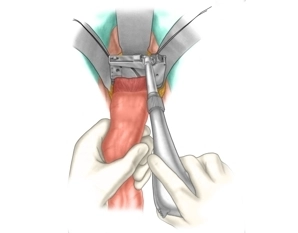The technique is illustrated with descendorectostomy serving as an example (see also open rectal resection). The rectum is transected with a linear stapler.
-
Resecting the rectum
-
Dissecting the wall of the descending colon
-
Arming the proximal stump with a purse-string suture
Soundsettings First, clean and disinfect the proximal stump of the large bowel with a swab (e.g., soaked in povidone-iodine) (not illustrated). Then preplace an over-and-over purse-string suture of strong monofilament material with stitches every 4 mm Finally, insert the anvil and tie the purse string suture on the anvil shaft.
Note: The purse-string suture may also be fashioned with a purse-string clamp and a double-ended suture with straight needles.
-
Inserting the stapler transanal
Slide the anvil shaft over the trocar until the anvil snaps into fully seated position. ... - Opera
Activate now and continue learning straight away.
Single Access
Activation of this course for 3 days.
Most popular offer
webop - Savings Flex
Combine our learning modules flexibly and save up to 50%.
US$87.56/ yearly payment
general and visceral surgery
Unlock all courses in this module.
US$175.10 / yearly payment


